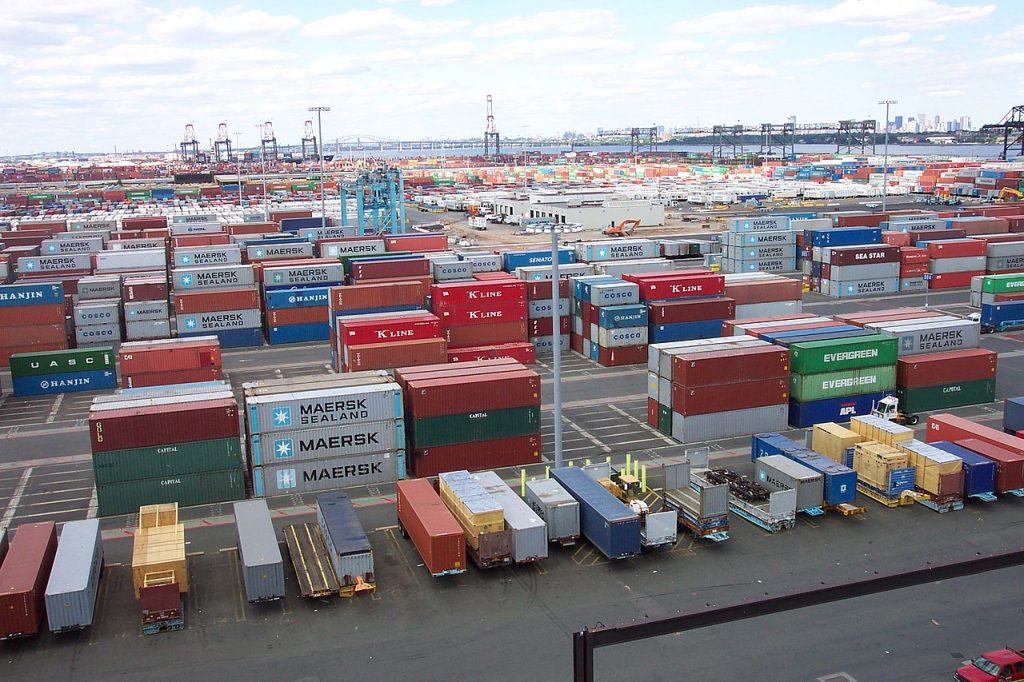Shipping containers are a great method of shifting all sorts of goods around the world. Each year more than 420 million maritime shipping containers are transported around the globe making up some 90 per cent of the globe trade. But despite these impressive statistics, only two per cent of containers are stopped and inspected by officials. As a result, smuggling through sea containers is becoming increasingly attractive for criminals and more challenging to detect for crime prevention authorities at ports. The situation poses a huge and serious threat to the security of the international trade supply chain including sea container transport in Perth, which is critical for sustainable development. But officials are cracking down on shipping container crime with the introduction of new technology.
The stats on shipping container crime
Due to the pressure of getting some 5,000 or more shipping containers off and onto a container ship in just a mere few hours, authorities at ports just don’t have the staff to check every single container. Not only that, but the lack of space to handle a backlog of containers waiting to be canned, adds to their problems. According to statistics, just five per cent of containers are scanned for contraband in the United States on entry into the country. Financial reasons may add to the reasons why shipping containers are not scanned thoroughly. It is estimated that it costs around $500 million annually for security checks at ports in the United States.
Even though no official government statistics are available, it is understood shipping containers regularly carry contraband such as drugs, ammunition and even illegal immigrants across the globes seas. The situation presents a serious problem for border and security staff across the world’s oceans.
New scanning technology
To combat this problem, the EU and a private are developing a brand new scanning technology jointly security scanning company, which will have the ability to hugely increase the amount of containers that can be scanned regularly without the added additional costs. The European Union’s Consistently Optimized Resilient Secure Global Supply Chain European Research Project (CORE) is working with the UK security scanning company Smiths Detection in a bid to develop a new shipping container scanning system which could witness the throughput of shipping containers being scanned triple in numbers. This would hugely impact on the number of illegal trade going through ports across the world.
CORE says the number of containers that are currently scanned would increase dramatically. They state on their website: “New hardware will increase the rate at which containers are scanned, from around 100-150 per hour to between 300 and 500. And, new software will give operators the tools that they need for faster, accurate analysis of images to prevent bottlenecks. Operator-assist features include automatic detection of certain substances and the highlighting of suspicious areas within a container.”
Experts agree that getting some 500 shipping containers through a single scanner an hour could significantly tighten security for container ports around the world. At the same time, it would cut costs per unit of scanning the boxes significantly as they leave the ports making it a cost-effective exercise all round.
Security in the USA
Tightening shipping container security at ports has encouraged the US Congressional Budget Office (CBO) to look closely at home. Having been spurred on by the global threat of terrorism, they carried out some estimates as to how the US Homeland Security agency could crackdown on smuggling using current available technologies. The CBO have said that raising imaging rate to 100 per cent containers across all 74 US ports that take in international containers, would double costs from a staggering $4 billion to $8 billion over 10 years.
And if the US authorities decided to double their current scanning rates to 10 per cent, using present technology would take their costs to around $1 billion per year. It is important to take a closer look when speaking about ‘current technology’. Based on the one scanner per port scanning 100-150 containers per hour, US authorities can triple the throughput via security scanners and drop the cost per unit by a huge 66 per cent. Put another way, you could do 15 per cent of shipping containers for the same price as they do five per cent currently. So, if you double the 15 per cent to 30 per cent, a third of all shipping containers entering the US will be covered by the same $1 billion currently spent. Experts have estimated that increasing costs to $3 billion could conceivably shut all smuggling down in the US using this method. That would tighten up security at container ports by a significant margin.
How profiling on shipping containers is carried out
Despite only a few shipping containers being scanned today, profiling is done with considerable care. The few and far between containers that are scanned, are targeted carefully. Oftentimes, shipping containers are tracked pretty much all the way from where they are loaded to where they are unloaded. For example, if a shipping container is loaded in the Peruvian Andes (one of the known centres of global cocaine production) it is more likely to be scanned than one loaded in a warehouse in China, which is dispatching iPhones.
Crime intelligence services are hot on their heels when tracking shipping container movements. Each one of the five per cent of containers scanned will have been targeted specifically. Indeed, contraband does get through but it’s not as easy for smugglers and terrorists to escape unnoticed. Crime agencies are often spot on with their instincts and get what they are looking for when scanning a shipping container.
If you are looking for a comprehensive quotation, whether for a one-off job or a long-term contract, contact Gecko Logistics Group. You can use the booking form on their website or telephone 1300 744 192 during business hours and speak to a member of their sales team.


